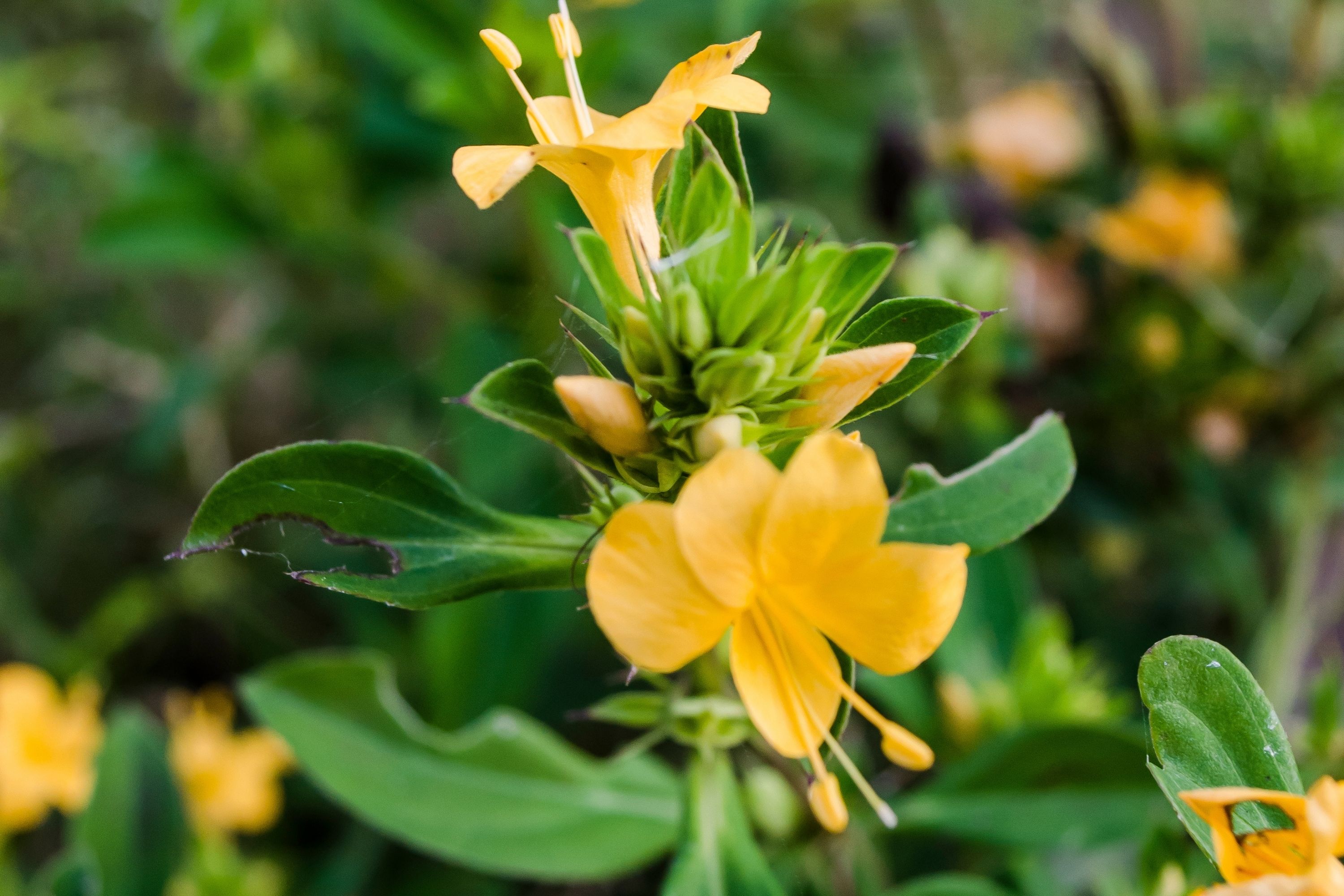Porcupine Flower
(Barleria prionitis)

Description
Barleria prionitis is a shrub in the family Acanthaceae, native to Island and Mainland Southeast Asia, China, the Indian Subcontinent, the Arabian Peninsula and northeastern Africa. It is widely spread as an ornamental and weed, occurring in naturalised populations around the world. It used not only as an ornamental but also as a hedge and extensively as a component of folk medicines. As a weed it is regarded as problematic in many areas. A much-branched shrub up to 1.8m tall, the lower leaf axils have spines 1–2 cm in length, one of the specific features of this Barleria. The stem and branches are terete, smooth, lenticellate and glabrous. The leaves are elliptic to ovate (4-10.5 × 1.8-5.5 cm) with both surfaces pubescent when young but becoming glabrescent soon. The large golden-yellow flowers are clustered in the axils of the upper leaves and/or on bracts. Apically spinose calyx lobes and a yellowish to orange corolla are used to distinguish this species from other Barleria. In Zhōngguó/China, flowers appear October to December, while fruiting occurs from December to February, while in Pakistan there is all year flowering. The Australian flowering and fruiting times are trimodal, from March to June, August to October and December. The subspecies pubiflora (see Taxonomy, below) is separated from the nominate subspecies by having longer anthers (5mm or more) and corolla (4.5–7 cm) and larger leaves (up to 17 x 5.5 cm). Some of the habitats in which the shrub is found include roadsides, thickets, and dry places in evergreen broad-leaved forests. It occurs up to 600 m. In Myanmar the shurb favours fields and pastures. A fast growing perennial plant widely commercialized as an ornamental, B. prionitis in many tropical areas has frequently escaped and grown as a weed in disturbed areas, forest edges, rocky outcrops, near streams, along roads, and in overgrazed pastures. It able to grow in a wide range of climates and soil types and is adapted to grow in open, full sunny areas and in highly disturbed sites as well as understory of secondary forests. It has great dispersal capability, spreading sexually by seeds and vegetatively by stem fragments. The shrub has potential to cause economic and environmental damage in that it formins dense thickets that displace native vegetation, prevent revegetation by native plants.
Taxonomic tree:







